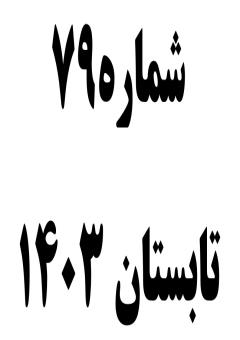-
-
List of Articles
-
Open Access Article
1 - Analysis of the content of the textbook of the Qur'an and heavenly messages of elementary school based on the social health component
Amir Azimi Galoogahi masumeh bagherpur -
Open Access Article
2 - The relationship between resilience and cognitive flexibility in students of Islamic Azad University, Ayatollah Amoli branch
Somaie Abbaspour shabanali bagherian -
Open Access Article
3 - Identification and Analysis of Effective Factors on the Promotion of Cultural Literacy Education of the First-Year High School Boys in Tehran
Reza Goodarzi Kourosh Parsa Moin soghra afkaneh -
Open Access Article
4 - Iinvestigate the Relationship between loneliness, attachment styles and academic self-efficacy with Internet addiction among high school boy students
Afsaneh Saber Kargan -
Open Access Article
5 - »Problem solving«, a method in education or an end for ethics?
Elaheh Abdollahi Ali Moradkhani Fatemeh Ahmadbeigi -
Open Access Article
6 - The effect of social capital on human resources empowerment of Islamic Azad universities of Mazandaran province to present a model
seyed zeynolabedin ebrahimin shiyadeh Aliasghar shojaee babak hoseinzadeh -
Open Access Article
7 - Presenting the culture-building university model with an emphasis on the sustainable development approach
maedeh beykzadeh Taraneh Enayati mahsa gholamhosiennzadeh -
Open Access Article
8 - Investigating the effectiveness of the mind in improving isolation and mental health due to the use of social networks among high school students in Karaj.
keyvan assa majid Aaliasgari -
Open Access Article
9 - The mediating role of progress motivation in the relationship between epistemological beliefs and students' philosophical thinking
soheila hossainpour farshth afkari shahede zarei -
Open Access Article
10 - Educational assistant robots and smart classrooms (The use of artificial intelligence in education)
esmat rasouli ali sadeghi
-
The rights to this website are owned by the Raimag Press Management System.
Copyright © 2021-2025







